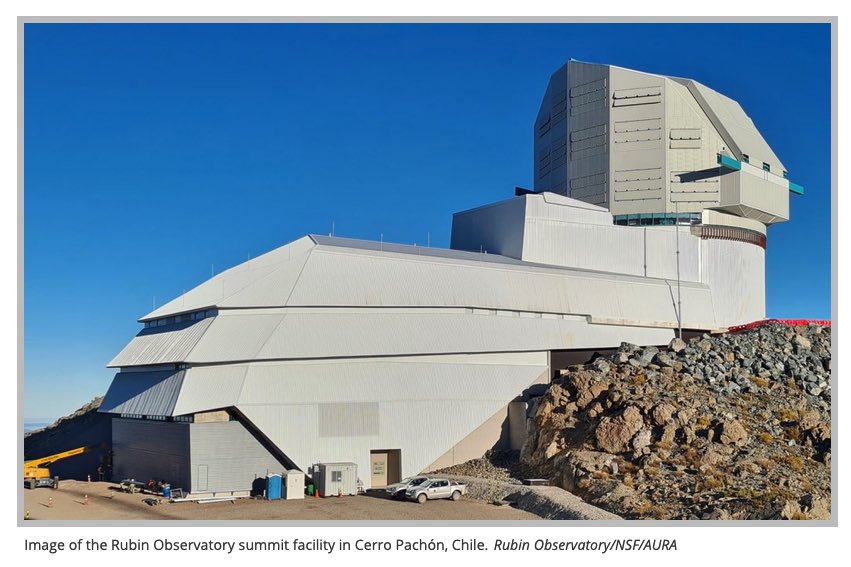
The University of Washington and Carnegie Mellon University have announced an expansive, multiyear collaboration to create new software platforms to analyze large astronomical datasets generated by the upcoming Legacy Survey of Space and Time, or LSST, which will be carried out by the Vera C. Rubin Observatory in northern Chile. The open-source platforms are part of the new LSST Interdisciplinary Network for Collaboration and Computing — known as LINCC — and will fundamentally change how scientists use modern computational methods to make sense of big data.
Through the LSST, the Rubin Observatory, a joint initiative of the National Science Foundation and the Department of Energy, will collect and process more than 20 terabytes of data each night — and up to 10 petabytes each year for 10 years — and will build detailed composite images of the southern sky. Over its expected decade of observations, astrophysicists estimate the Department of Energy’s LSST Camera will detect and capture images of an estimated 30 billion stars, galaxies, stellar clusters and asteroids. Each point in the sky will be visited around 1,000 times over the survey’s 10 years, providing researchers with valuable time series data.
Scientists plan to use this data to address fundamental questions about our universe, such as the formation of our solar system, the course of near-Earth asteroids, the birth and death of stars, the nature of dark matter and dark energy, the universe’s murky early years and its ultimate fate, among other things.
“Tools that utilize the power of cloud computing will allow any researcher to search and analyze data at the scale of the LSST, not just speeding up the rate at which we make discoveries but changing the scientific questions that we can ask,” said Andrew Connolly, a UW professor of astronomy, director of the eScience Institute and former director of the Data Intensive Research in Astrophysics and Cosmology Institute — commonly known as the DiRAC Institute.
The Rubin Observatory will produce an unprecedented data set through the LSST. To take advantage of this opportunity, the LSST Corporation created the LSST Interdisciplinary Network for Collaboration and Computing, whose launch was announced Aug. 9 at the Rubin Observatory Project & Community Workshop. One of LINCC’s primary goals is to create new and improved analysis infrastructure that can accommodate the data’s scale and complexity that will result in meaningful and useful pipelines of discovery for LSST data.
Through this new project, new algorithms and processing pipelines developed at LINCC will be able to be used across fields within astrophysics and cosmology to sift through false signals, filter out noise in the data and flag potentially important objects for follow-up observations. The tools developed by LINCC will support a “census of our solar system” that will chart the courses of asteroids; help researchers to understand how the universe changes with time; and build a 3D view of the universe’s history.
“Our goal is to maximize the scientific output and societal impact of Rubin LSST, and these analysis tools will go a huge way toward doing just that,” said Jeno Sokoloski, director for science at the LSST Corporation.
“They will be freely available to all researchers, students, teachers and members of the general public.”
Northwestern University and the University of Arizona, in addition to the UW and Carnegie Mellon, are hub sites for LINCC. The University of Pittsburgh will partner with the Carnegie Mellon hub.
Image: Courtesy of University of Washington
Source: University of Washington, 25 August 2021
Read the full article here:
https://www.washington.edu/news/2021/08/25/lincc-uw-cmu/
